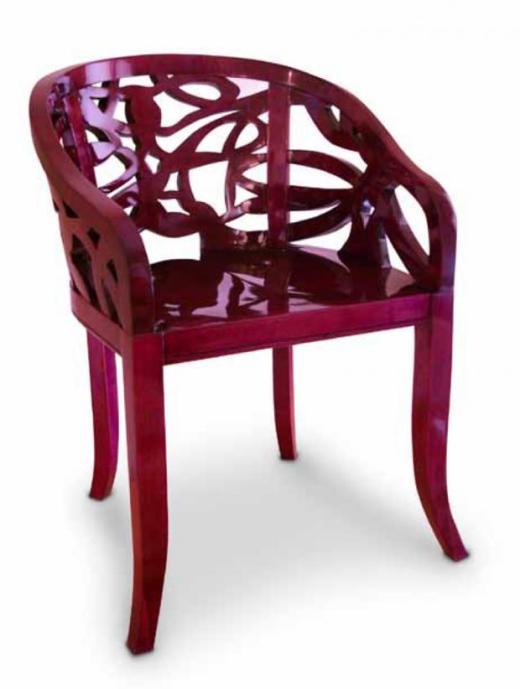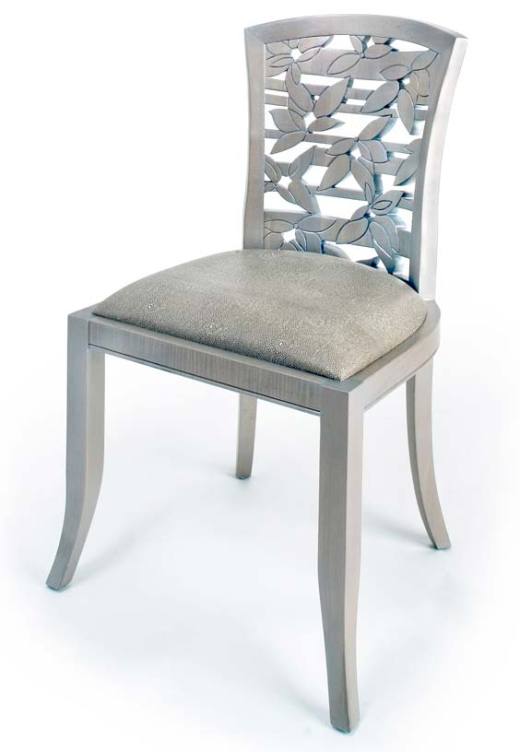Irwin Weiner ASID - Studio furniture maker and interior designer Diane Paparo sat down with Design2Share recently and kindly shared with us her tips on where to begin when it comes to dealing with wood finishes, stains, and treatments. It's one of those  practical decorating considerations that most people "wing it," but we wanted to hear what a strong furniture maker had to say. Diane has designed furniture for fine homes around the world - even the executive office suites at Revlon. Let's see how someone who combines luxury, quality, beautiful detailing, and thoughtful functionality handles furniture finishes.
practical decorating considerations that most people "wing it," but we wanted to hear what a strong furniture maker had to say. Diane has designed furniture for fine homes around the world - even the executive office suites at Revlon. Let's see how someone who combines luxury, quality, beautiful detailing, and thoughtful functionality handles furniture finishes.
Choosing a furniture finish can be a tall order. First, you'll want to consider the design scheme and how the finish can be integrated into the whole, but you'll also want to think about maintenance and repair.
1. Let's tackle color first. You have four options: natural, stained, dyed, and painted. Some woods are naturally beautiful with just a clear protective finish, but most look richer when they're stained. Stains give you the option of deepening a wood's natural color or mimicking another wood's color.
Stains don't penetrate the furniture's surface deeply; they lhave a transparency that enhances the grain. Stains can also accentuate imperfections, so inspect the finish carefully.
2. Dye is really my favorite option. Dyes offer you a vibrant color spectrum. They penetrate the wood surface more deeply than stains, yet they offer saturated color without obscuring the wood's natural grain.
Thirty years ago, I discovered aniline dyes when I was searching for a way to add novel color to my furniture. Paint was too opaque and obscured the grain. Aniline dye gave me the intensity with transparency. The only drawback is that aniline dye penetrates so deeply that refinishing or retouching can be difficult.
3. Lacquer is another of my favorites. Shine is IN today. Lacquer is actually a paint. It can be clear of color, but it's a high-gloss paint that's factory-sprayed to achieve a glass-like finish. Lacquer is beautiful, but it does scratch and, furthermore, to refinish lacquer, you must completely re-spray the piece. You can also opt for a matte lacquer with a conversion varnish for a more satiny finish that is a bit more forgiving.
4. Whatever your color options, you'll want to think very carefully about protective finishes. How the piece will be used and where it will be used should dictate your protective finish. For instance, dining room tables get a lot of use and a lot of spills. You'd never choose a shellac finish because alcohol dissolves the finish.
5. Wood tends to flex with wear and tear and atmospheric changes. Ideally, you'd want a finish that will flex and be strong at the same time. Shellacs and lacquers are quite flexible and durable. Polyurethane, the most durable finish, proves a very hard plastic surface, but it's also the most rigid and can lift from a surface in a matter of years. Oils and waxes are very flexible, beautiful, and often durable, but they demand many hours to apply, many layers to protect the surface, and many days to cure.
While I might use a clear lacquer on the dining chairs in our line, I prefer a bee's wax finish for all our natural slab pieces. The wax cures in 30 days and creates a surface so impervious that you could put a hot coffee pot on it and it wouldn't mark. In the end, your choice should be what amplifies the beauty or integrity of the wood and minimizes the care and maintenance for you, the owner.
![]() Click here to subscribe to our daily design videos and features.
Click here to subscribe to our daily design videos and features.




